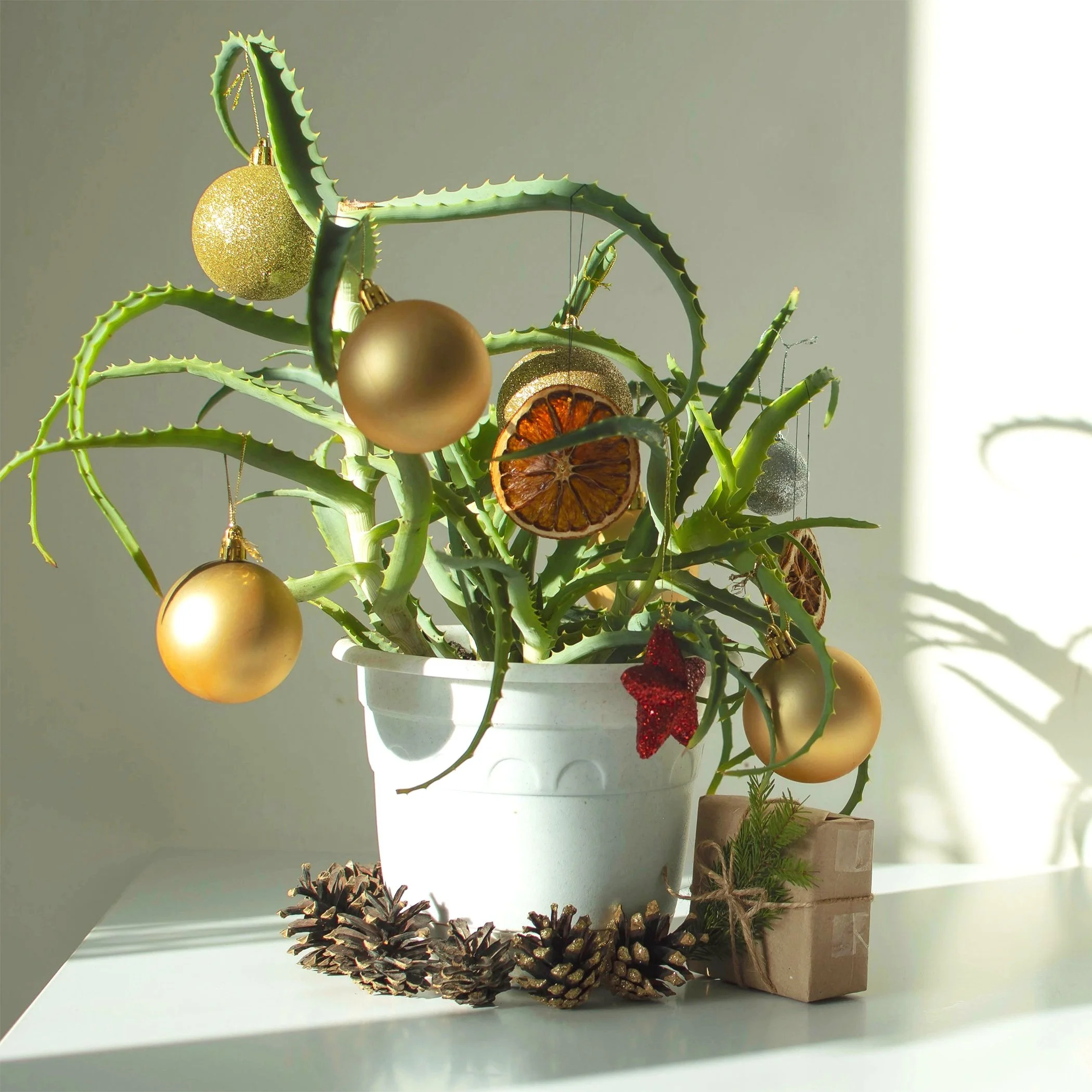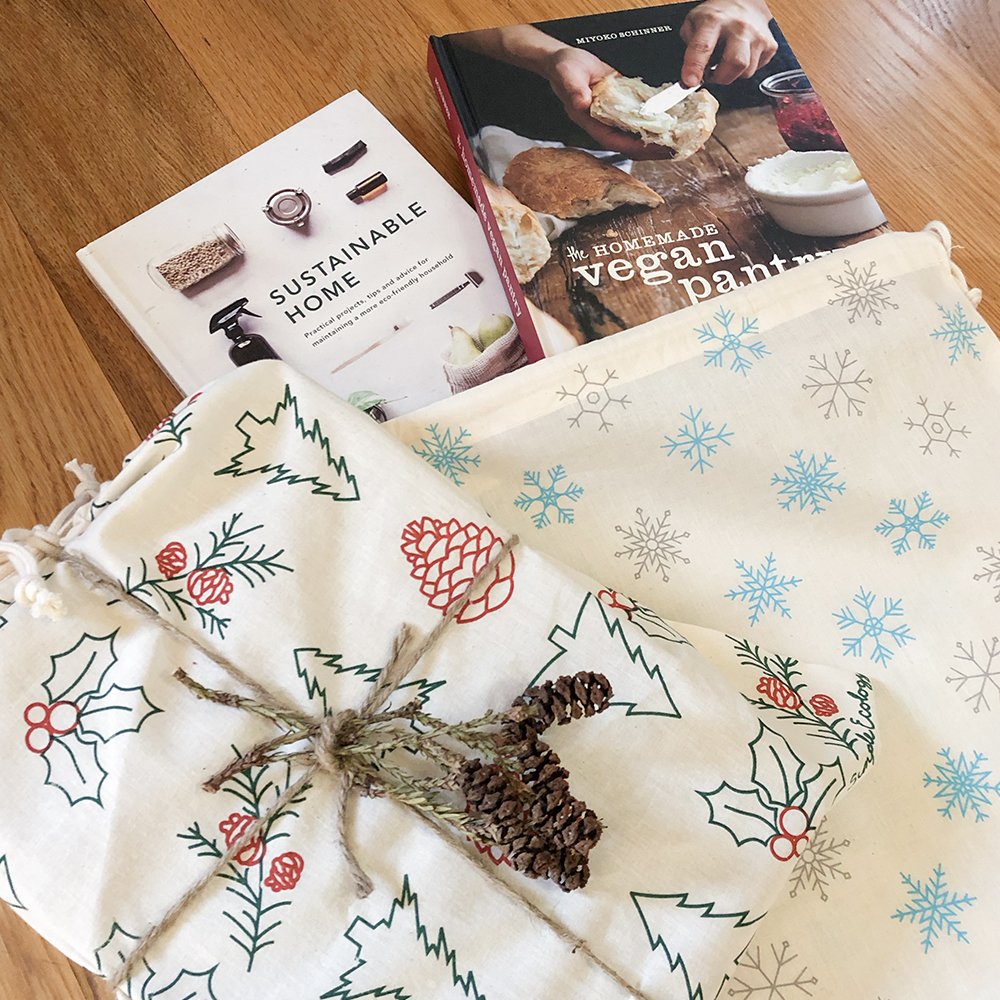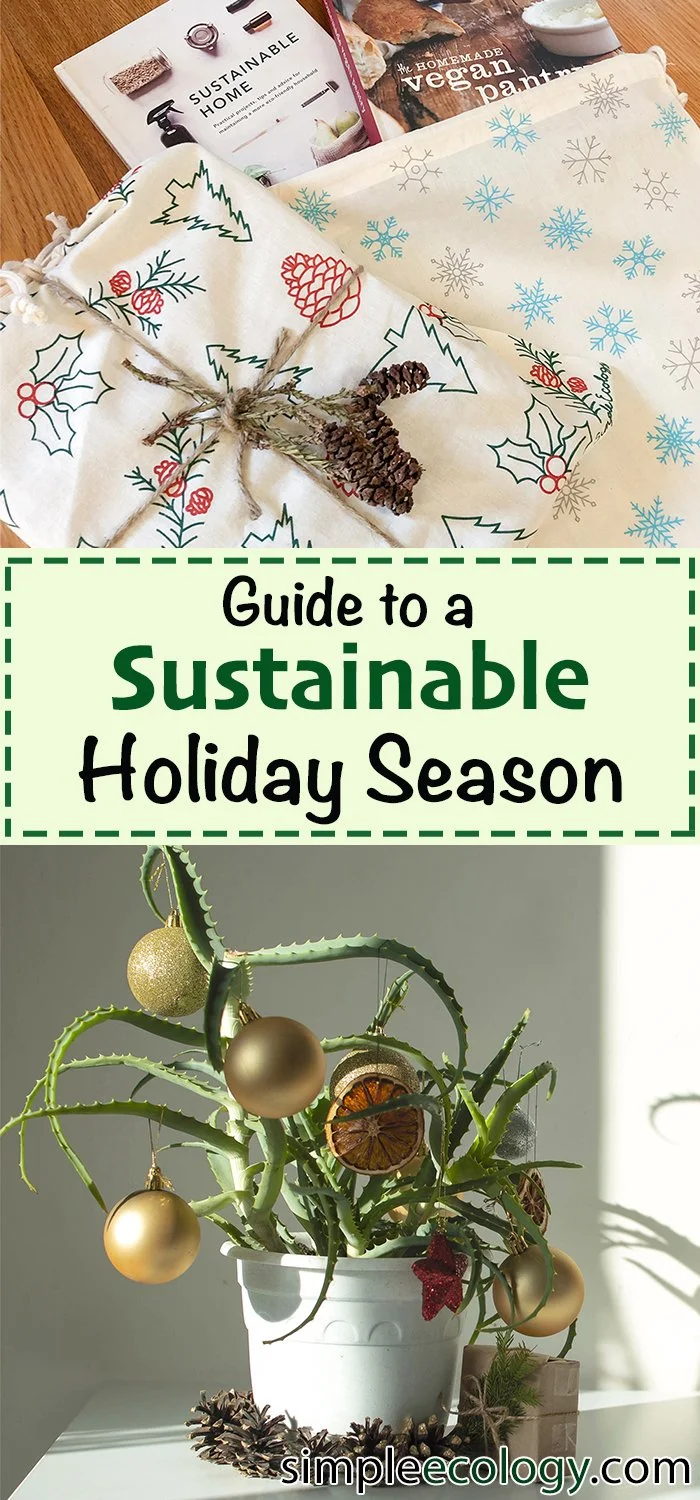Guide to a Sustainable Holiday Season
As the year winds down, all of the winter-time holidays and festivities begin to ramp up. From traveling to visit friends and family, to gift giving traditions, and enjoying all of the special holiday foods, there’s always a lot going on during the fall and winter.
While it’s known as the most festive time of the year, the holiday season is also the most wasteful. From food waste to discarded packaging and excessive carbon emissions, the EPA estimates that 25% more waste is produced every year between Thanksgiving and New Years in the US. In order to combat all the waste that’s being created, here are some simple ways that you can reduce your waste and have a sustainable holiday season.
Holiday Trees & Decorating
When decorating your apartment, home, or even dorm room, it’s good to keep in mind the items that you’re putting up. Instead of buying all new decorations every year, consider reusing, DIY-ing, and thrifting your holiday decor!
Check out your local thrift shops for some secondhand decorations in need of a new home. Be sure to head over early in the season before they sell out, or even check in after the holidays to stock up for the next year. If you’re part of a neighborhood app or forum, organize a community-wide decoration swap. That way, everyone can join in while promoting a secondhand, zero-waste approach to decorating!
For other seasonal decorations, look to compostable options whenever possible. Wreaths are a great option, and are often made from the already trimmed branches of harvested pine trees. Find one at a local nursery or tree farm, then compost the branches at the end of the season. As a bonus, save any metal wiring or support from the wreath and DIY your own next year. As another decoration, bundle together a display of pine trimmings, pine cones, and holly for a table or counter centerpiece. Dehydrated orange & citrus slices can be strung together with natural twine to make a garland or tree decoration. Then, once the season is over, pop these into the compost so they can decompose naturally, rather than clogging up a landfill.
According to the US Department of Agriculture, over 15 million trees were cut down for Christmas in the United States during 2017 alone. While replacement trees are replanted after others are harvested, they still require years of water to grow and a lot of transportation to reach their destination. While real trees are still much better for the environment than plastic trees, they could still use some improvement. So if you celebrate Christmas (or just enjoy having a pine tree in your house), consider trying out some alternatives this year.
If your home resembles a small plant nursery, consider decorating an indoor plant with lights and ornaments. This will help you save space and money, while still maintaining a festive spirit. Not an indoor plant lover? Try finding a wooden or metal tree statue that you could decorate instead. You won’t have to worry about watering or accidentally killing it, and it can be packed away and saved to reuse for years.
If you like the feel of a real tree, look into purchasing a potted miniature evergreen tree. They can be decorated for the holidays like a regular Christmas tree, then brought outside for the rest of the year. These are a great alternative to purchasing a newly harvested tree every season, and if taken care of properly, should last for years and years. Plus, who doesn’t love a mini tree!
Cut Down on Food Waste
At this time of the year, it seems like everyone starts heading into their kitchens more and more often. Whether it’s for cups of cocoa, wild amounts of seasonal cookies, or just for everyday meals, the winter-time is packed with kitchen activity. The downside is, all of that extra kitchen activity and cooking means that there’s much more food waste around this time of year.
According to Changeworks, the amount of food waste increases by 80% over the holiday season, resulting in 230,000 tonnes of food waste over a few short weeks in the UK alone. It’s estimated that this amount of food wasted values at £275 million (over $360 million). In the United States, the EPA estimates that 70 billion pounds of food ends up in landfills every year, and this food waste accounts for 24% of all municipal waste produced.
To prevent your food from going to waste, be sure to plan your meals and other cooking activities ahead of time to make the most of perishable ingredients. And if you know your produce & herbs won’t be used before it’ll go bad, consider freezing it, dehydrating it, or preserving it in some other manner. Shop your local bulk sections and loose produce to buy exactly how much you’ll need, saving you from wasting food and wasting money.
When you’re cooking much more than usual, it’s almost inevitable that there will be some amount of food waste, like cut off ends of produce or tiny leftover scraps from a meal. The best way to deal with these is to add them to your at-home compost pile. They’re incredibly easy to start, will help you become more aware of the food waste being produced, and can up the health of your gardens & houseplants. While chopping & cooking, save raw veggie and herb scraps to make your own Homemade Vegetable Broth. This will help you get the most of your food waste and add incredible flavor to homemade soups and sauces, and the waste at the end can still be added to the compost. If you’re not into starting your own compost pile, look into a local composting service that’ll pick up your waste for you, or even share the scraps with composting community members with websites like ShareWaste.
It’s great to be mindful of the fact that wasting food is a luxury that many people do not have. If you’re in the giving spirit during the holidays, consider donating to a local soup kitchen or food pantry to help those who don’t have readily-available access to food. These organizations will often take food donations, monetary donations, and are almost always looking for volunteers to donate their time. Call up your local food bank to see what help they could use most this time of year.
Gift Giving, Packaging, & Wrapping
Whether you’re celebrating a holiday, birthdays, family gatherings, or just the end of the year, the fall & winter seasons are filled with gift-giving traditions. Remember to shop small, ditch the disposable wrapping, and give gifts worth giving!
When in doubt, ask your friends & family what they genuinely need. While it might not be as exciting as elaborate or flashy gifts, necessities are much more practical, useful, and overall worthwhile. A good-quality can opener or some reusable napkins will be used and appreciated much more frequently than a novelty throw pillow or shiny piece of jewelry. And if the individual says they don’t want anything, listen to them! “Gifting” additional clutter will be more of a hindrance than a help, and spending some quality time together is more impactful than a tangible gift.
Consider skipping the physical gifts all together and instead make a donation to a charity in someone else’s name. It’s always great to support charities, non-profits, and organizations making a difference, whether it’s for environmental causes, animal welfare, soup kitchens & food pantries, or local community groups. Your donation will make a much bigger difference to the organization than a new sweater or tech gadget to a friend would.
Food is always a much appreciated gift, and everyone loves a good snack! Instead of gifting a generic store-bought item, consider making your friends & family some homemade treats instead. From jellies & jams to breads & cookies or even homemade applesauce, you can’t go wrong with food items made with love. And if you’re not the cooking type, no worries! Head to a local farmers market, boutique, or small business with locally-made food products that will make great gifts for sure. Try out some honey from a local apiary (or bee farm), small batch beers & ciders, or hand-made desserts.
For other items, look to your local thrift shops & secondhand stores for gifts and other one-of-a-kind pieces. Not only will you be repurposing pre-loved items, you’ll also be avoiding consumer supply chain issues, saving money, and reducing carbon emissions from manufacturing & transportation. And if your recipient is as eco-conscious as you, they’ll appreciate the thoughtful gesture along with the stance against traditional holiday consumerism. If you can’t find anything at your local thrift shop, check out some online marketplaces for secondhand goods, garments, and more. These are much better at helping you find exactly what you’re looking for!
When wrapping up your presents and gifts this holiday season, remember that you’re trying to reduce waste, not create more! Earth911 estimates that about 2.3 million pounds of wrapping paper ends up in landfills in the US every year. And that’s not even covering all of the plastic bows, gift bags, tissue paper, greeting cards, and other wrapping that is disposed of! Skip the plastic coated disposables for some much simpler gift coverings. Consider wrapping gifts in newspaper, leftover shipping paper, or even a piece of excess fabric. You can use paints & markers to jazz them up if they’re in need of more holiday spirit. Or skip the disposables altogether and make the switch to Reusable Gift Wrap Bags instead! These will last for years & years, and can be used for holidays, birthdays, or any other celebration that you can think of. To top it all off, use some natural ribbons or ropes like raffia or jute twine for a bow, and be sure to save them to use again for the next gift giving occasion.
For additional ideas about reusable wrapping, gift sets, and more, check out our shop!








